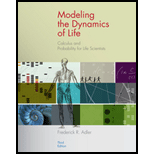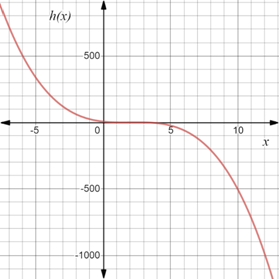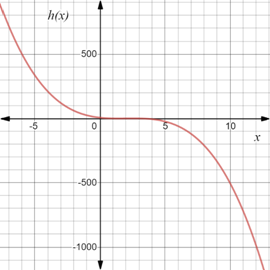
Concept explainers
To calculate: The first and second derivative of the function
Answer to Problem 21E
The value of first derivative of the function is

Explanation of Solution
Given information:
The function
Formula used:
Let a function g be continuous on closed interval
If first derivative of the function is greater than zero that is
If first derivative of the function is less than zero that is
If second derivative of the function is greater than zero that is
If second derivative of the function is less than zero that is
The point where the graph changes it nature is known as the point of inflection.
Power rule of differentiation,
Calculation:
Consider the provided function
Simplify the function, multiple the terms of second and third bracket first,
Now, multiply the terms of both the brackets together,
Evaluate the first derivative of the function,
Apply sum rule of differentiation,
Apply the power rule of differentiation,
Evaluate the second derivative of the function, differentiate the first derivative again with respect to x .
Apply the power rule of differentiation,
Recall if first derivative of the function is greater than zero that is
If first derivative of the function is less than zero that is
If second derivative of the function is greater than zero that is
If second derivative of the function is less than zero that is
The point where the graph changes it nature is known as the point of inflection.
To sketch the graph of the function
Observe that first derivative of the function
The derivative of the function has solutions,
Simplify it further as,
Next observe that second derivative of the function
The function
Next observe that second derivative of the function
The function
At
Therefore, the graph of the function

Thus, the value of first derivative of the function is
Want to see more full solutions like this?
Chapter 2 Solutions
Modeling the Dynamics of Life: Calculus and Probability for Life Scientists
- Use the rules for derivatives to find the derivative of each function defined as follows. y=-7x2e-3xarrow_forwardFind the derivative of each function defined as follows. y=12x3-8x2+7x+5arrow_forwardDetermine whether each of the following statements is true or false, and explain why. The only function that is its own derivative is ex.arrow_forward
 Calculus For The Life SciencesCalculusISBN:9780321964038Author:GREENWELL, Raymond N., RITCHEY, Nathan P., Lial, Margaret L.Publisher:Pearson Addison Wesley,
Calculus For The Life SciencesCalculusISBN:9780321964038Author:GREENWELL, Raymond N., RITCHEY, Nathan P., Lial, Margaret L.Publisher:Pearson Addison Wesley,
